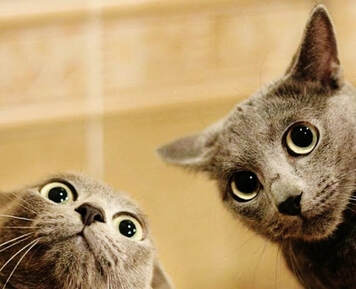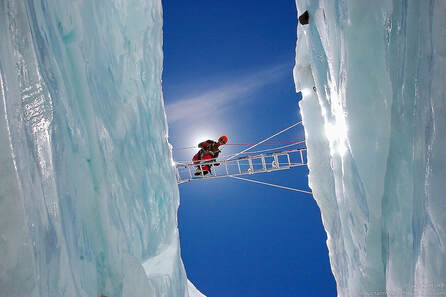|
‘You’re wrong, pal.’ (Simon) It was a different way to end a coaching conversation. Many leaders and managers would dance and wriggle around it, trying to find a less direct way of signalling disagreement, if at all. At least in UK culture, that is. Simon was coaching a colleague and decided to dispense with the niceties. After all, why waste time and beat around the bush if the answer is obvious? As far as Simon was concerned, the bloke was talking a load of nonsense and that was it. Enough. ‘You’re wrong, pal.’ In fact, the issue his colleague was presenting could have had some fairly significant consequences for a group of vulnerable young people. Simon felt accountable. He saw it as his job to put the bloke straight. The difficulty was how to do this in a coaching conversation. How to present a forceful-enough challenge whilst yet, at the same time, to retain his colleague’s responsibility to own and resolve it himself. This was confronting-coaching on steroids. Simple. ‘You’re wrong, pal.’ So, here’s the thing. What do you do as a leader, manager or coach if a person’s beliefs, values, behaviours, intentions or actions clash fundamentally with your own? What if you foresee serious consequences that they don’t see, or that don’t matter to them? What if it only becomes apparent in the midst of a coaching conversation? Do you stay silent, pose a question, offer an opinion, snatch the reins from them, or do something else? Would you ever assert: ‘You’re wrong, pal’?
62 Comments
‘The mind is a fire to be kindled, not a vessel to be filled.’ (Plutarch) Curiosity killed the cat. True? The allegations were never proved. As far as I’m concerned, curiosity is innocent and the accusations were fake news. My 5 year old daughter asks me, ‘Dad, why is it cold downstairs but hot upstairs?’ ‘Because warm air rises’ I reply, gesturing a floating-upwards movement with my hands. ‘But why does it rise?’ Now that’s curiosity. Posing a question beyond the question; being not-satisfied to accept things at face value. Curiosity is a pre-requisite for learning, discovery and change. It’s a psychological state and a metaphysical stance. It means I am open; willing to engage actively in a spirit of invitation and inquiry. It means I am seeking; I want to know and, as such, I’m excited by fresh insights, ideas or challenges to what I think I already know and understand. As such, it’s a healthy and courageous antidote to the fight-flight-freeze response of defensive anxiety. What does curiosity entail in practice? How can we do it? 1. Suspend our already-knowing; hold it lightly, as-if possibility. 2. Expose ourselves to new and diverse people, cultures and experiences. 3. Listen and hear, especially for useful dissonance with our own assumptions and beliefs. 4. Be courageous in seeking critique and in responding graciously, with humility. 5. Inspire colleagues and clients to practise it too. Can I help you develop greater curiosity in your work? Get in touch! ‘It’s about moving on in some way from point A, not necessarily to point B or C, but to some position beyond A.’ (Bill Rosseter) I love Rosseter’s open definition of the fundamental goals of learning, development and education. We could argue this principle lays at the heart of leadership, coaching, training and facilitation too. After all, an axiom of Western thought is the unquestioned value of personal autonomy and agency. Applied more broadly in organisation development (OD), we can attach the same idea to teams, groups and organisations. It points towards an underlying and oft-implicit intention, trajectory and destination: from dependence towards ever-increasing independence: to stand on one’s own two feet. And it’s not just theoretical. If, like me, you were born into a Western culture; perhaps especially into a UK proud-of-its-island-mentality culture, notice the connotations and feelings we associate with the words themselves: dependence vs independence. Dependence can sound and feel (negatively) weak, vulnerable and needy. Independence, by contrast, can sound and feel (positively) strong, resilient and resourceful. We see this language played out increasingly on the global-geopolitical stage too; with independence often being associated (desirably) with power, control and self-determination. So, what could this look like in leadership, coaching, training and facilitation? Reg and Madge Batten, development pioneers against a backdrop of colonialism in Africa, proposed three distinctive forms of intervention that, when used well, can support a useful journey of empowerment. In paraphrase, there are things we can: (a) do for others; (b) enable others to do for themselves; and (c) leave others to do without us. Some critical questions this spectrum begs are: what is most facilitative (that is, enabling) for this person (or team, group, organisation) in this situation, at this time - and who decides? There are further considerations too. The Battens (above) coined an important qualifying phrase, qualitative autonomy, stating: ‘We are interested not only in the fact of independence but also in its quality.’ Independence is not a values-neutral end in itself and, therefore, needs to be balanced with broader ethics and values in order to ensure holistic change. It is possible, for instance, to imagine a form of independence that is self-centric and limiting, undermining or exploitative of others; lacking any sense of altruism, mutuality-synergy or healthy interdependence; and, ultimately, self-defeating. So, how do you work with people, teams or organisations to learn, develop and grow? How far do you take your, and their, cultural backgrounds, beliefs and values into account? How do you help ensure that wider people, relationships and systems are kept in view? ‘So much more was said in the unsaid.’ (Bridget Devoue) Silence: a powerful rhetorical device, used by speakers and musicians to evoke resounding emotional impact. Silence leaves the audience…waiting…in...anticipation and ‘the sound of silence can be the most deafening sound of all’ (Toth). Silence is an important presencing tool in coaching and therapy too: an inviting silence that signals attentiveness; a space to feel deep and think hard; a willingness to listen and to hear. Silence interrupts and creates a...pause. It’s the silent space between notes that makes music possible. These kinds of silence are so very different to the deadly silence of…intimidation. ‘The predator wants your silence. It feeds their power, entitlement, and they want it to feed your shame’ (Davis). This is the act, the feeling of being, becoming, done to, suppressed; collusion and fear. I’ve felt that silence at times; as if an invisible hand is grasping at my throat; making it hard for me to squeeze the words out, to breathe. It’s the silence of the silenced, the voice-less; where all that's left is a dark, lifeless, empty...void. So, we do well to tread with wisdom and insight here. 'There's a time to be silent and a time to speak' (Ecclesiastes 3:7). ‘Not every truth is the better for showing its face undisguised; and often silence is the wisest thing for a person to heed' (Pindar). Some things are best said, others better left unsaid. We may find ourselves awestruck, speech-less, lost for words. We may simply feel no need to speak. The same silence that one person finds awkward, difficult or lonely can feel calming, refreshing or revitalising for another. What part does silence play in your leadership, OD, coaching or training? When is your best advice: ‘Don’t speak’? ‘A clash between two people doesn’t mean either one is bad. Show some understanding and tolerance, unless they are a serial killer…in which case, run.’ (Stephanie Davies) A close friend in the Philippines heard a sharp disturbance outside today. Two neighbours were engaged in a knife fight. It started over one person showing rations she had received, during lockdown, to another. The other, worried for her own family facing starvation, took it as an insult, as bragging, and flew at her. This Filipina stepped into the affray, held a safer space between them, and calmed them down. I asked what on earth possessed her to do it. She said, ‘They were acting out of desperation, out of fear.’ She gave the aggrieved party what little cash she herself had left. The woman burst into tears. She could now buy food for her baby. Enough to survive. Life is hard-edged for the poor. Here’s a Malaysian friend, this time in Cambodia and well before the lockdown started. He’s the manager of a hotel chain and locked in a dispute with staff. This friend knows he has to hold his ground but things are tense and risk getting out of control. He invites the trade union leader to meet him in his office, to see if they can negotiate a way forward. The leader arrives, sits down, places a loaded pistol and two hand grenades on the desk, and says, ‘OK, let’s talk.’ Now I’ve faced some tough negotiations in my time but none that come close to that. I asked what he did. My friend replied, ‘I stood fast. I figured that, if he had intended to kill me, he would have done it already.’ Such accounts and experiences certainly put my own work and life into perspective. I’m rarely placed in situations where tensions are anywhere near that high, or where I’m called upon to show such stark courage in the face of real danger. In the first instance, the Filipina responded with empathy for both pro- and antagonist. She saw beyond their actions to the real people, to the deep anxieties that lay behind their drama. In the second, the manager interpreted the encoded meaning behind his counterpart’s actions, reading the cultural messages and signals it pointed towards. When have you found yourself having to respond urgently to a crisis? How did you do it? What happened? ‘Can miles truly separate you from friends? If you want to be with someone you love, aren’t you already there?’ (Richard Bach) Social distance. It’s not just physical. It’s a feeling. I meet someone close to me, albeit with a 2-metre space in between, and my instinct is to hug, to shake hands, to embrace. There’s a brief, awkward dance as we hesitate, come to a halt, hold the rule. It’s an invisible gulf that separates us, interrupts our contact, keeps us apart. After a moment, we adjust ourselves and the conversation begins to flow. Gradually...a new and different normal emerges. We find a way to bridge the gap. A smile, a gesture, an animated movement, a tone of voice. We start to feel closer again. A metaphorical touch. Perhaps it’s the same on-screen. We meet a person, a client, a colleague online and, at first, the technology forms a barrier, a boundary and a bridge between us. It feels different to being in the same physical room at the same time and we may feel that similar sense of distance, of strangeness, of desire to connect. Yet, somehow, we do it. Our intrinsic human powers of empathy, imagination and communication create their own paths of relational contact. We tune into voice, expressions, movement and surroundings. Over time, we feel each others’ presence intuitively, and the gap feels smaller. How have you handled social distance with people at work? How are you finding online leadership, OD, coaching and training? What are the pros and cons and how are you making it work? Pav Ponnoosami blogged satirically this week that, during the lockdown, ‘The bedroom has become the boardroom’. As we find ourselves staring at each other on screen, we often see a backdrop, a glimpse of a person’s home life, an insight into the person-beyond-the-role. I find myself intrigued by the different things I see-hear that lay behind: books on the shelf; flowers on the desk; photos on the wall; a child that stumbles in unexpectedly, asking for attention. They all add context, meaning. Yet is an online relationship a real relationship? I’ve certainly never spent so much time with clients and colleagues on Zoom as I have done during this past few weeks. Is it real? The question itself begs at least two underlying questions: what constitutes an authentic relationship, and what do we mean by real? We could of course apply the same two questions to evaluate encounters and interactions between people in the real world; that is, the world that we think of as real, not just the virtual one. So, some thoughts. Can an online conversation allow us to know and understand each other better? Yes, although I will know someone better if I see and experience them acting-interacting in a range of different situations and relationships. Can it enable effective task communication? Yes, if both-all parties have access to suitable and stable technologies. Can it enable practical teamwork to achieve a common purpose? Yes, if all have equal access. Can it build friendship or love? What do you think? |
Nick WrightI'm a psychological coach, trainer and OD consultant. Curious to discover how can I help you? Get in touch! Like what you read? Simply enter your email address below to receive regular blog updates!
|










 RSS Feed
RSS Feed